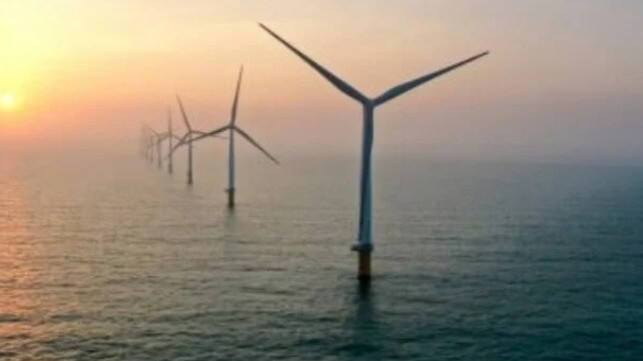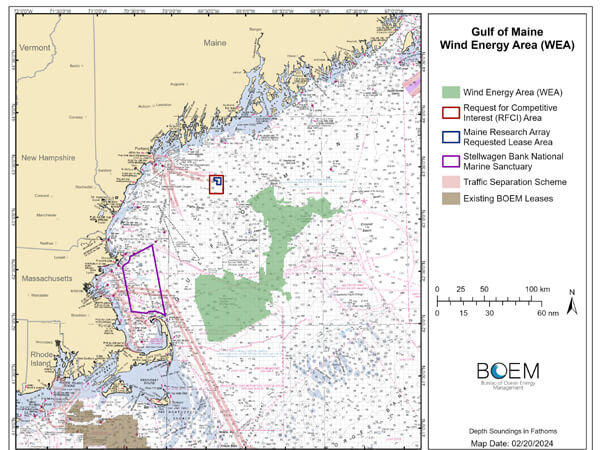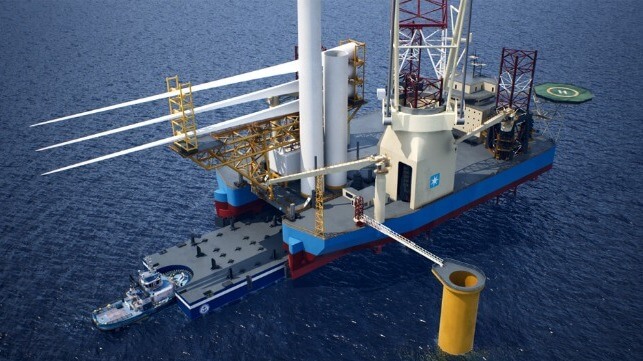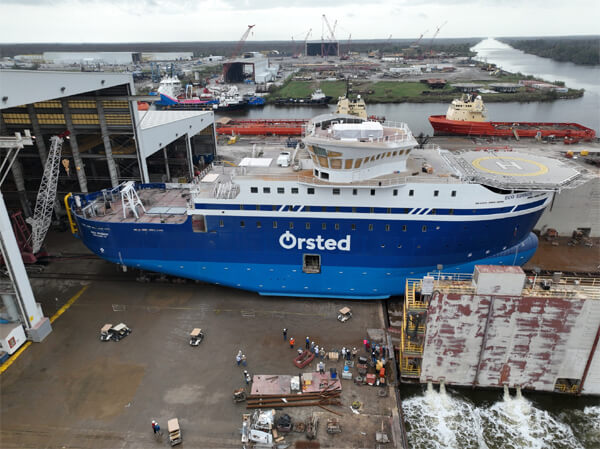BOEM Advancing Offshore Wind Energy for New Jersey and Gulf of Maine

The Bureau of Ocean Energy Management mapped out its next two steps in the ongoing efforts to implement the United States’ offshore wind energy program. A day after the U.S. marked the completion of its first large offshore wind farm, the agency overseeing the development process reports it is beginning the environmental review for the 1.5 GW Atlantic Shores North wind farm off New Jersey while the same time has completed the designation of a massive two-million-acre Wind Energy Area in the Gulf of Maine.
“BOEM is continuing to implement the Biden-Harris administration’s clean energy agenda, while maintaining a careful approach to prevent, reduce, and address any adverse effects on ocean users and the marine ecosystem,” said BOEM Director Elizabeth Klein. “As an integral part of our environmental assessments, we will continue to actively solicit feedback from Tribes; federal, state, and local government partners; the fishing community; and the public to help guide our actions.”
The launching of the effort to prepare an Environmental Impact Statement for the Construction and Operation Plan for the Atlantic Shores project marks the twelfth wind energy COP environmental review they have initiated. It is another step toward the goal of 30 GW of offshore wind energy capacity in the U.S. by 2030.
Atlantic Shores is a project proposed by Shell New Energies and EDF Renewables and according to BOEM’s announcement, the plan calls for 157 wind turbines, eight offshore substations, one permanent meteorological tower, and two potential export cable corridors that would make landfall in Sea Girt, New Jersey and either the New York City area or near Asbury Park, New Jersey.
The lease area, which the company was awarded in 2018 is more than 81,000 acres located at least eight miles off the New Jersey coast and 60 miles from New York. The company holds a total of three leases in the area with Atlantic Shores North targeting operations by 2027 to become New Jersey’s first wind farm. BOEM is initiating a 45-day comment period till early May as it begins the review for the project.

BOEM is designating a massive new wind area (green) for the Gulf of Maine (lower left shows the existing leases)
BOEM also today announced it has finalized the area in the Gulf of Maine as the next step toward the second goal which is 15 GW of floating offshore wind energy capacity by 2035. They highlight area while 43 percent smaller than the draft released last October, has the potential to support the generation of 32 GW, which surpasses the 10 GW goal from Massachusetts and the 3 GW goal from Maine.
The area is in a range between 23 and 92 miles off the coast. It ranges from Maine to Massachusetts and New Hampshire. BOEM finalized the area after extensive engagement with the states and interested parties including ocean users and the fishing community. A 30-day public comment period is beginning
Based on the feedback they highlight that it was reduced 80 percent from the initial area identified for potential leasing. BOEM notes it will further seek to avoid or minimize remaining ocean use and resource conflicts in subsequent phases of the leasing process.
Moving these two elements forward, BOEM highlights it has now approved six commercial-scale offshore wind projects. They also conducted four auctions during the Biden administration and are exploring additional potential both in the Gulf of Maine and the Central Atlantic.
Maersk Supply Service and Edison Chouest Partner for Wind Feeder Vessels

The U.S. shipbuilding industry continues to benefit from the emergence of the offshore wind energy sector. The latest deal is a partnership between Maersk Supply Service and Louisiana-based Edison Chouest Offshore for the construction of vessels as part of Maersk’s feeder ship approach that is designed to enable faster offshore wind installations.
The partnership is the next step in the implementation of the company’s feeder spread. It will include two tugs and two barges to be built by Bollinger Shipyards. They will be owned and operated by ECO in support of the installation system.
Maersk Supply Service detailed its plans for the feeder approach several years ago and already has its large wind turbine installation vessel on order with Seatrim in Singapore (former Sembcorp Marine) and it is expected to be delivered in 2025. The concept is that the massive jack-up vessel, which will be registered in Denmark, will be positioned at the site, and be fed by specialized barges transporting materials from the staging area at the wind port with the tugs.
“Maersk Supply Service’s new installation concept can make offshore wind farm installations significantly faster with estimated efficiency gains of 30 percent. The partnership with ECO makes this new technology available for the U.S. offshore wind market enabling faster offshore wind installations in the U.S.,” said Christian M. Ingerslev, CEO of Maersk Supply Service.

In a separate wind sector project, ECO is building the first U.S.-flagged SOV for the offshore wind (Orsted)
The barges and tugs will be registered in the U.S. to meet Jones Act requirements. The WTIV will have a unique interlocking system that will secure the barges and raise trays with the components feeding the installation process. According to Maersk, in addition to meeting the Jones Act requirements, the WTIV spends more time on site and the locking and stabilizing system is less dependent on weather and sea conditions for the supply operation.
Maersk Supply Service already has the installation contract for the Empire Wind 1 project, which is now being developed by Equinor. It has cleared most of its hurdles, including the decision to split the partnership between Equinor and BP. Equinor expects to make the final investment decision by mid-2024 on the wind farm, which has already received its federal approvals from BOEM and just recently cleared to renegotiate its power contract by New York State. The second phase, Empire Wind II, however, has been put on hold and Maersk also has a contract for Beacon Wind which now belongs to BP.
The first installation is to be from the South Brooklyn Marine Terminal which will be the staging area. The barges are less likely to have height and clearance problems while they are moving materials to the offshore location.
ECO has already entered the offshore wind sector and is looking to expand its opportunities in the industry. In December 2023, ECO moved the first U.S.-built Service Operation Vessel, ECO Edison, from the building dock. The ship is set to operate to support Ørsted’s offshore operations.
Last year, President Joe Biden highlighted that companies have already announced 18 offshore wind shipbuilding projects. This includes investments of nearly $3.5 billion across 12 manufacturing facilities and 13 ports to strengthen the American offshore wind supply chain.
No comments:
Post a Comment